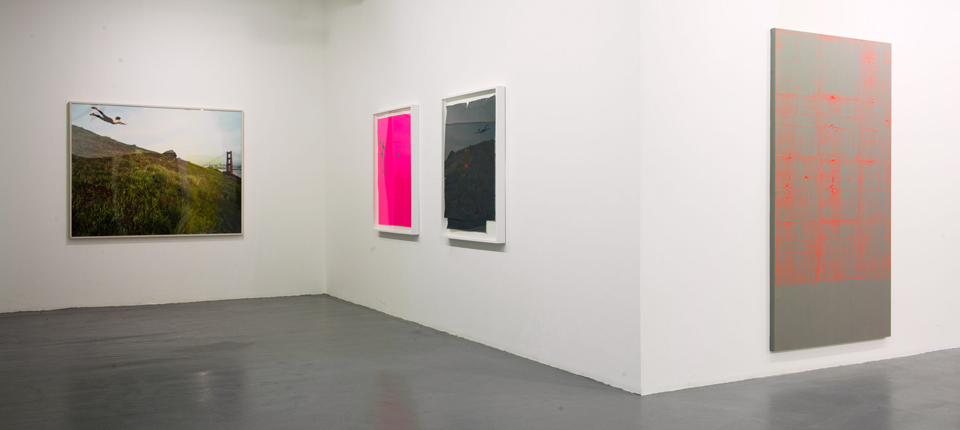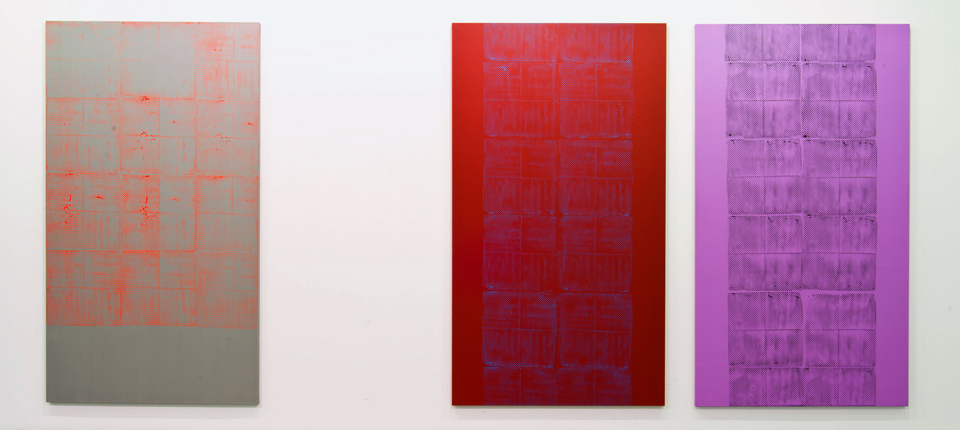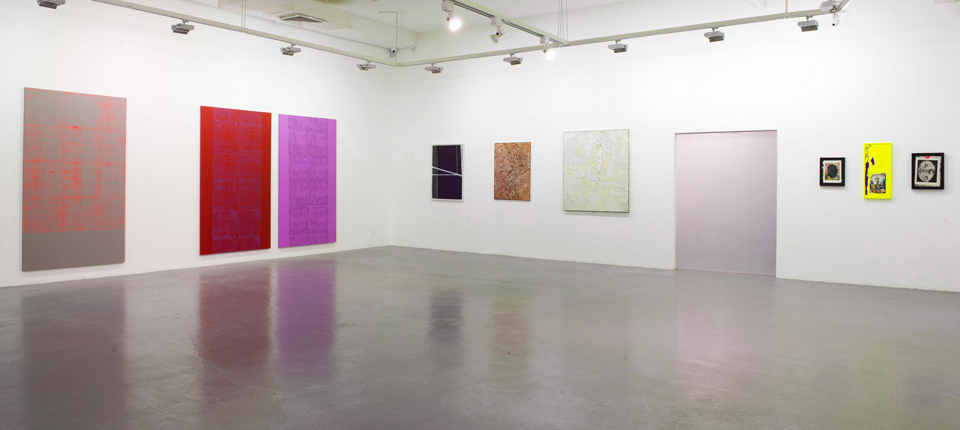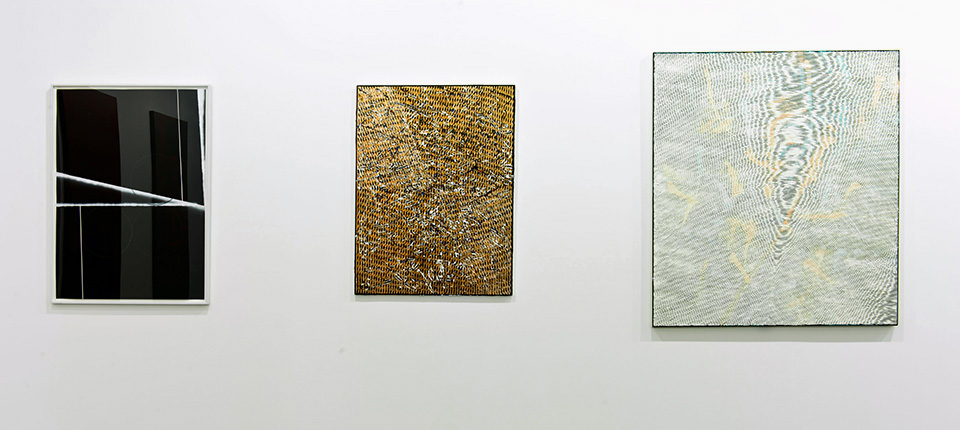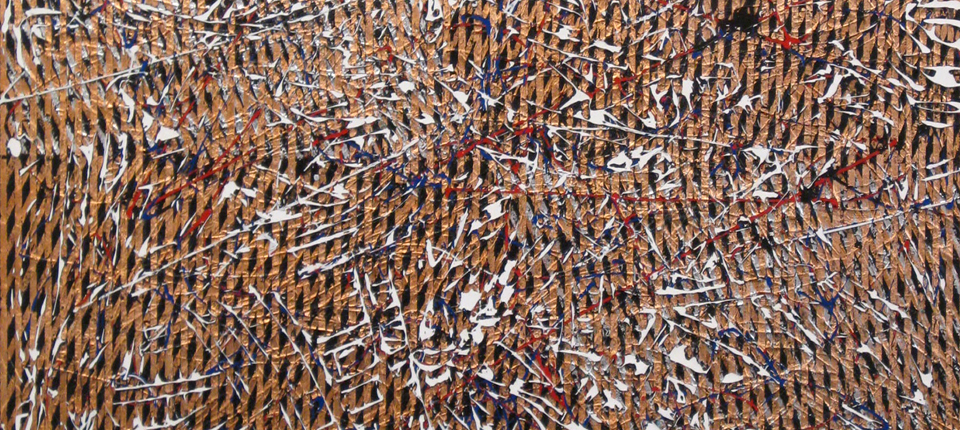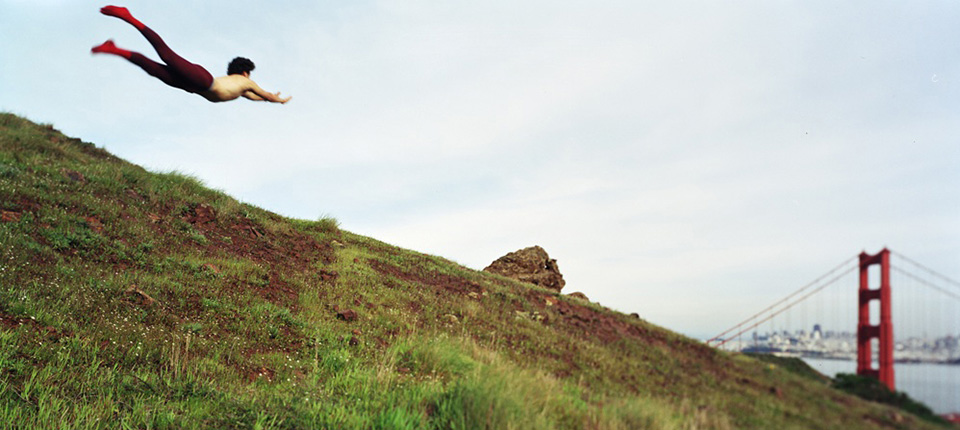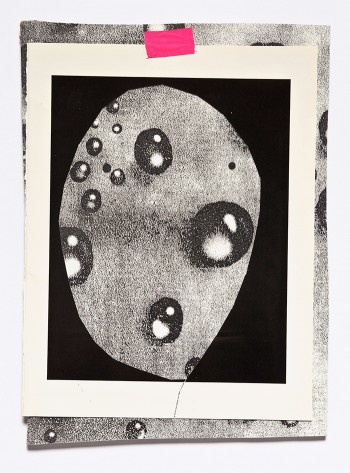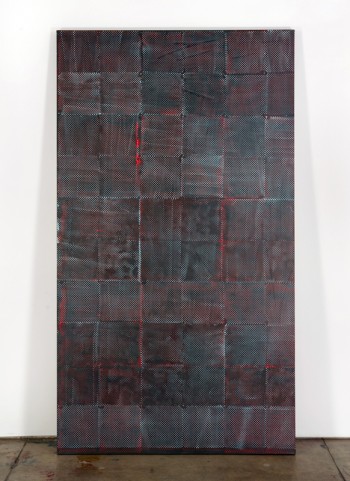Exhibition V
A Bridge Too Far: Skyler Brickley, Aaron Curry, Daniel Gordon, Garth Weiser, and Lothar Hempel
A bridge too far. This message underlies A Bridge Too Far, an exhibition of young American artists Skyler Brickley, Aaron Curry, Daniel Gordon, Garth Weiser along with Lothar Hempel at Mottahedan Projects in Dubai.
A Bridge Too Far draws a parallel between the American spirit and the freshness and vigor of the young art scene in Dubai. The show’s title references a like-named American novel by Cornelius Ryan (1974) and its 1977 film adaptation portraying an aborted Allied mission, Operation Market Garden, in 1944. Attempting to end the Second World War via an invasion into Germany that required securing several bridges, the Allied forces had to abandon their aims when the Dutch city of Arnhem proved a bridge too far.
In the context of this exhibition, the phrase finds meaning in a photograph by Daniel Gordon (2010), in which the artist is caught flying from a hilltop toward the Golden Gate Bridge, the West-Coast gatekeeper of American dreams. For the split second taken by the camera shutter, Gordon renders the impossible impossible. Unaltered by Photoshop, this photograph evokes common superhero fantasies, contrasting the limitations of the human body with our lofty aspirations. Yet, more cynically, by demonstrating success, it exposes failure: the image of Gordon’s flight inspires another image in the viewer’s mind—that of his inevitable fall—so that the work simultaneously invokes feelings of hope and doom.
Continuing this exploration of the body, Aaron Curry’s paintings and collages are abstract but also anthropomorphic and therefore Surrealist. Flattening and juxtaposing elements resembling body parts, they also reference Cubism. Bright colors like hot pink recall Warhol and pop art while spray techniques incorporate a touch of 1980’s graffiti, so that these works are politically positioned as commentary on commodity culture, which is at once honored and eschewed. Curry chooses to remain analog in a digital age, producing and copying forms and images in new combinations rather than creating exact reproductions.
Skyler Brickley’s work, which tests the limits of repetition as inherent to digitalization, is also concerned with defining the individual and the possibility of uniqueness in our post-analog world. He uses the same materials as those of a do-it-yourself painting project to create ceiling-to-floor canvases measuring 226 by 127 centimeters, that is, reiterating the 16:9 ratio of a theater screen flipped on its side. The dots resemble Ben-Day prints in a reference to pop art as much as they reflect Brickley’s paint tray. Layering the evocation of the film industry, the paintings suggest blurred film negatives or smeared film stills, hence intimating a faded memory: thus a yellow canvas recalls a girl on the beach while a grey one with bright orange dots recollects a forest fire. Displayed in secession, Brickley’s works suggest an infinite line of production but in fact preserve the human touch. They represent a break down in the digital system we take for granted.
Garth Weiser’s paintings similarly display nostalgia for the human hand. Minimalist black and white interact with fleshy tones in what is a discomforting grafting of the self onto an impersonal world. This paradoxical aesthetic also characterizes Weiser’s other works in which corporate logos are rendered as abstract landscapes while layered canvases and drawings reminding one of wood grain evoke a romantic American past without devolving into the maudlin.
Combining several themes mentioned above, Lothar Hempel’s work plays with memory, dreams, melancholia and expectation. The mixed media sculpture Baccha Paranoika (2009) references Greek tragedy at once with pop advertising and today’s ubiquitous product placement. The work is at once historic and futuristic, fantastic and quotidian, grand and irreverent. It endows the viewer with the ability to participate in the theater of the artwork by placing him/her as an actor in conversation with the character depicted, a reclamation of individual agency in the age of mechanical reproduction.
Skyler Brickley received his post-baccalaureate from the San Francisco Art Institute and in 2005 completed his MFA at the Yale School of Art. His work has been exhibited at Marvelli Gallery in New York, the Hudson Valley Center for Contemporary Art in Peekskill, Yvon Lambert Gallery in New York, Sandroni Rey in Los Angeles and the Museum of Contemporary Art in Tucson. He is a co-founder of the online arts journal, The Highlights, and currently lives and works in New York.
Aaron Curry was born in San Antonio, Texas, in 1972. He holds a BFA from the School of the Art Institute of Chicago (2002) and an MFA from the Art Center College of Design in Pasadena (2005). Most recently, Curry has exhibited at the High Museum of Art, in Atlanta, Almine Rech Gallery in Brussels, and Michael Werner Gallery in New York. He lives and works in Los Angeles.
Daniel Gordon was born in 1980 in Boston. He received his BA from Bard College in 2003 and an MFA from Yale University in 2006. Venues at which his work has been shown recently include the Museum of Modern Art in New York, the San Francisco Museum of Art, Saatchi Gallery in London, Wallspace in New York, Onestar Press in Paris and Tony Wight Gallery in Chicago; he has an upcoming show at M+B Gallery in Los Angeles. Gordon lives and works in Brooklyn.
Lothar Hempel was born in 1966 in Cologne and currently lives and works in Berlin. He studied at the Kunstakademie Dusseldorf (1992). Hempel’s recent solo exhibitions include shows at La Conservera in Murcia, Spain, Anton Kern Gallery in New York, Stuart Shave Modern Art in London, Gerhardsen Gerner in Berlin, MGM in Oslo and Gio Marconi in Milan. He has also exhibited at Saatchi Gallery in London; Domaine Pommery in Reims, France; the Herzliya Biennial for Contemporary Art in Herzliya, Israel; and Centre d’Art Contemporain / Passage in Troyes, France.
Garth Weiser, who was born in 1979 in Helena, Montana, is the recipient of a BFA from the Cooper Union for the Advancement of Science and Art (2003) and an MFA from the Columbia University of the Arts (2006). Solo exhibits of his work include those at Casey Kaplan in New York, Kavi Gupta Gallery in Chicago and Guild and Greyshkul in New York. Weiser lives and works in New York.
